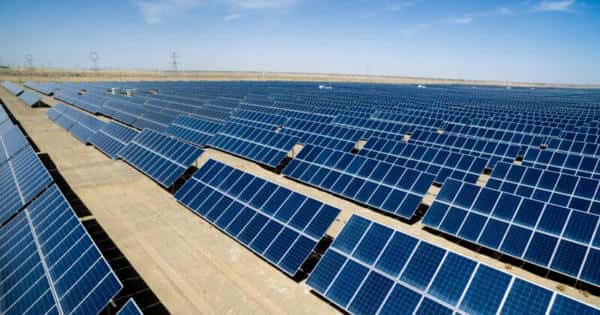Researchers used carbon dots made from human hair waste sourced from a barbershop to create a kind of ‘armor’ to improve the performance of cutting-edge solar technology. In a study published in the Journal of Materials Chemistry A, researchers led by Professor Hongxia Wang and Associate Professor Prashant Sonar of QUT’s Centre for Materials Science demonstrated that carbon nanodots could be used to improve the performance of perovskite solar cells.
Perovskites solar cells, a relatively new photovoltaic technology, are regarded as the best PV candidate for delivering low-cost, high-efficiency solar energy in the coming years. They have proven to be as efficient in terms of power conversion efficiency as currently available commercially available monocrystalline silicon solar cells, but the challenge for researchers in this area is to make the technology less expensive and more stable.
QUT researchers have used carbon dots, created from human hair waste sourced from a Brisbane barbershop, to create a kind of “armour” to improve the performance of cutting-edge solar technology.
Unlike silicon cells, they are made of a simple compound, and because they are flexible, they could be used in scenarios such as solar-powered clothing, backpacks that charge your devices on the go, and even tents that can function as standalone power sources. This is the second major piece of research to emerge as a result of the use of carbon dots derived from human hair as a multifunctional material.
Last year, Associate Professor Prashant Sonar led a research team that turned hair scraps into carbon nanodots by breaking down the hairs and then burning them at 240 degrees Celsius. The researchers demonstrated in that study that carbon dots could be converted into flexible displays that could be used in future smart devices.
In this new study, Professor Wang’s research team, including Dr. Ngoc Duy Pham and Mr. Pannu, collaborated with Professor Prashant Sonar’s group to investigate the use of carbon nanodots on perovskite solar cells. Professor Wang’s team previously discovered that nanostructured carbon materials could be used to improve the performance of a cell.

Professor Wang’s team discovered the carbon dots forming a wave-like perovskite layer where the perovskite crystals are surrounded by the carbon dots after adding a solution of carbon dots into the process of making the perovskites. “It forms a protective layer, a kind of armour,” Professor Wang explained.
“It protects the perovskite material from moisture and other environmental factors that can cause material damage.” The study discovered that perovskite solar cells covered with carbon dots had higher power conversion efficiency and stability than perovskite cells that were not covered with carbon dots.
Professor Wang has been studying advanced solar cells for about 20 years, and has been working with perovskite cells since they were invented about a decade ago, with the primary goal of developing cost-effective, stable photovoltaic materials and devices to help solve the world’s energy problem. “Our ultimate goal is to make solar electricity cheaper, more accessible, and last longer, as well as to make PV devices lightweight because current solar cells are very heavy,” Professor Wang explained.
“This can only be achieved through a deep understanding of the material properties in large-scale production and under industrially compatible conditions.”
Professor Wang is particularly interested in how perovskite cells could be used to power spacecraft in the future. The International Space Station is powered by four solar arrays capable of producing up to 120 kW of electricity. However, one disadvantage of current space PV technology is the weight of the payload required to get them there.
While perovskite would be much lighter, one of the challenges for researchers is to develop perovskite cells that can withstand extreme radiation and a wide range of temperature variations in space – from minus 185 degrees Celsius to more than 150 degrees Celsius.
Professor Wang stated that while a solution may be ten years away, researchers are continuing to gain new insights in the field. Professor Wang’s research group is currently working with Professor Dmitri Golberg of the QUT Centre for Materials Science to better understand the properties of perovskite materials under extreme environmental conditions such as electron beam irradiation and temperature changes.
“I’m quite optimistic given how much this technology has improved so far,” Professor Wang said.
















